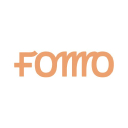How I Bought A Shopify App And Grew It To A $1M/Year
Hello! Who are you and what business did you start?
I’m Ryan Kulp, a marketer and long-time musician turned self-taught developer and micro PE fund manager. I grew up in Atlanta and then lived in NYC and San Francisco for 8 years after finishing school. Throughout this time I worked for a bunch of venture-backed tech startups, learning what to do and more importantly what NOT to do in a founder or management role. I also started and failed a couple of startups, using a mix of personal and “friends and family” funds but losing it all.
Finally, in 2016 I found and bought a social proof Shopify app called Notify, which we rebuilt and rebranded to Fomo. Over the next few years, we established ourselves as the market’s first and (I think?) largest social proof tool for eCommerce stores, scaling the original business by 600%.
Eventually, I stepped down as CEO in September 2020. during this time I experienced dramatic changes in my finances, my skill set (learning to code), and most importantly my mindset. I spent 1000s of hours reading books, going to conferences, networking, and sharpening my leadership chops to make Fomo something I could be proud of. It was my first startup success after 8...

Download the report and join our email newsletter packed with business ideas and money-making opportunities, backed by real-life case studies.

Download the report and join our email newsletter packed with business ideas and money-making opportunities, backed by real-life case studies.

Download the report and join our email newsletter packed with business ideas and money-making opportunities, backed by real-life case studies.

Download the report and join our email newsletter packed with business ideas and money-making opportunities, backed by real-life case studies.

Download the report and join our email newsletter packed with business ideas and money-making opportunities, backed by real-life case studies.

Download the report and join our email newsletter packed with business ideas and money-making opportunities, backed by real-life case studies.

Download the report and join our email newsletter packed with business ideas and money-making opportunities, backed by real-life case studies.

Download the report and join our email newsletter packed with business ideas and money-making opportunities, backed by real-life case studies.
















